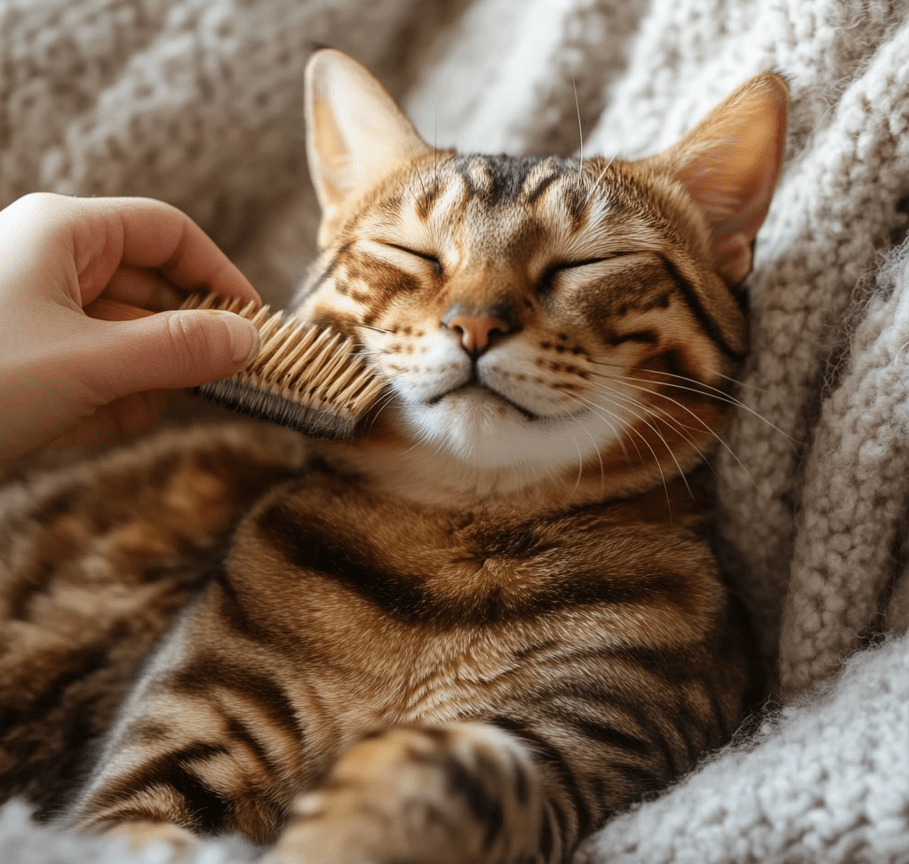
Bengal cats are intelligent, energetic, and spirited companions, but their bold personalities can sometimes lead to behaviors that need correction. Learning how to discipline a Bengal cat without causing stress is crucial for maintaining a harmonious relationship and ensuring your cat’s well-being. Unlike traditional punishment methods, effective discipline for Bengals focuses on positive reinforcement, redirection, and understanding their unique needs. This comprehensive guide provides practical, humane strategies to address unwanted behaviors while fostering trust and happiness in your Bengal.
Understanding the Bengal Cat’s Nature
Before diving into discipline techniques, it’s essential to understand why Bengals may exhibit challenging behaviors. Their hybrid lineage, combining domestic cats with the wild Asian leopard cat, gives them high energy, sharp intelligence, and a strong instinctual drive.
Common Bengal Behaviors Requiring Discipline
Destructive Scratching: Clawing furniture or walls.
Jumping on Counters: Exploring restricted areas.
Excessive Vocalization: Loud meowing for attention.
Aggressive Play: Biting or scratching during play.
Litter Box Issues: Avoiding the litter box due to stress or preference.
Why Punishment Doesn’t Work
Traditional punishment, like yelling or spraying water, can backfire with Bengals. It may:
-
Increase stress and anxiety, leading to worse behavior.
-
Damage trust, making your cat wary of you.
-
Trigger defensive reactions, such as aggression or hiding.
Instead, discipline a Bengal cat by redirecting their energy, rewarding positive actions, and creating an environment that supports their natural instincts.
Principles of Stress-Free Discipline
Effective discipline for Bengals is rooted in understanding their motivations and using positive, non-confrontational methods. Here are the core principles:
Positive Reinforcement: Reward desired behaviors with treats, praise, or play.
Redirection: Shift focus from unwanted behaviors to acceptable alternatives.
Consistency: Apply rules consistently to avoid confusion.
Environmental Enrichment: Provide outlets for energy and instincts to prevent misbehavior.
Patience: Behavior change takes time, especially with intelligent, strong-willed Bengals.
Step-by-Step Strategies to Discipline a Bengal Cat
Below are practical, humane methods to address common behavioral issues while keeping stress to a minimum.

1. Address Destructive Scratching
Bengals love to scratch to mark territory and maintain claw health. Redirect this behavior instead of punishing it.
Provide Scratching Posts: Offer sturdy, tall scratching posts with varied textures (sisal, cardboard, wood). Place them in high-traffic areas.
Make Furniture Unappealing: Use double-sided tape or citrus-scented sprays on furniture to deter scratching.
Reward Use of Posts: Give treats or praise when your Bengal uses the scratching post.
Trim Claws Regularly: Keep claws blunt to reduce damage, but avoid declawing, which is cruel and stressful.
2. Prevent Counter Surfing
Bengals are curious and love heights, making countertops tempting. Discourage this without confrontation.
Clear Counters: Remove food, crumbs, or interesting objects to reduce temptation.
Provide Alternatives: Install cat shelves or a tall cat tree for climbing and exploration.
Use Deterrents: Place aluminum foil or sticky mats on counters temporarily to make them less appealing.
Reward Ground Behavior: Treat your Bengal when they stay off counters or use their designated perch.
3. Manage Excessive Vocalization
Bengals are vocal and may meow loudly for attention, food, or boredom. Address the root cause to reduce noise.
Ensure Basic Needs Are Met: Check for hunger, thirst, or a dirty litter box.
Increase Enrichment: Provide puzzle toys, window perches, or interactive games to combat boredom.
Ignore Attention-Seeking Meows: Only respond when your Bengal is quiet to avoid reinforcing the behavior.
Engage in Play: Spend 20–30 minutes daily on active play to satisfy their need for interaction.
4. Correct Aggressive Play
Bengals’ predatory instincts can lead to rough play, like biting or scratching. Redirect this energy safely.
Use Toys, Not Hands: Play with feather wands, balls, or robotic toys to avoid encouraging hand-biting.
Stop Play if Aggressive: If your Bengal bites or scratches, calmly walk away to signal that rough play ends fun.
Reward Gentle Play: Praise or treat your Bengal for gentle interactions.
Provide Outlets for Hunting: Use toys that mimic prey to satisfy their instincts.
5. Resolve Litter Box Issues
Litter box avoidance can stem from stress, medical issues, or environmental preferences. Address it methodically.
Check for Medical Issues: Consult a vet to rule out urinary tract infections or other health problems.
Optimize the Litter Box: Use a large, uncovered box with unscented, clumping litter. Place it in a quiet, accessible location.
Clean Regularly: Scoop daily and deep-clean weekly to keep the box inviting.
Add More Boxes: Provide one box per cat plus one extra, especially in multi-cat homes.
Reduce Stress: Ensure your Bengal has safe spaces and a consistent routine.
Creating a Bengal-Friendly Environment
A stimulating, enriched environment prevents many behavioral issues by meeting your Bengal’s physical and mental needs.
1. Vertical Spaces
Bengals love to climb and perch. Install cat trees, shelves, or window perches to give them safe, high vantage points.
2. Interactive Toys
Puzzle feeders, treat-dispensing balls, and automated laser toys keep your Bengal engaged, reducing boredom-driven misbehavior.
3. Safe Hiding Spots
Provide tunnels, boxes, or cat condos where your Bengal can retreat if stressed or overstimulated.
4. Window Views
A perch near a window lets your Bengal watch birds or outdoor activity, offering natural entertainment.
5. Routine and Consistency
Establish a predictable schedule for feeding, play, and rest to create a sense of security.
LSI Keywords: Bengal cat enrichment, cat-friendly home, stimulate Bengal cat.
Positive Reinforcement Techniques
Positive reinforcement is the cornerstone of stress-free discipline. It encourages your Bengal to repeat desired behaviors without fear.
1. Use High-Value Rewards
Offer treats, praise, or playtime with a favorite toy when your Bengal behaves correctly. For example, reward them for using the scratching post or staying off counters.
2. Clicker Training
Clicker training is highly effective for Bengals due to their intelligence. Pair a clicker sound with a treat to mark desired behaviors, such as coming when called or using a scratching post.
3. Timing Is Key
Reward immediately after the desired behavior to reinforce the connection. Delayed rewards can confuse your Bengal.
4. Be Consistent
Ensure all household members use the same commands and rewards to avoid mixed signals.
LSI Keywords: positive reinforcement for cats, clicker training Bengal, reward-based cat training.
Common Mistakes to Avoid
When disciplining a Bengal cat, steer clear of these pitfalls to prevent stress and setbacks.
Yelling or Physical Punishment: This can scare your Bengal, damage trust, and worsen behavior.
Inconsistent Rules: Changing rules confuses your cat and undermines training.
Ignoring Underlying Causes: Address boredom, stress, or medical issues rather than just the behavior.
Overwhelming with Attention: Too much interaction can overstimulate your Bengal, leading to misbehavior.
Neglecting Enrichment: Without enough stimulation, Bengals may act out to entertain themselves.
When to Seek Professional Help
If your Bengal’s behavior doesn’t improve despite consistent efforts, consider professional support.

1. Veterinary Checkup
Sudden or severe behavioral changes may indicate health issues like pain, hyperthyroidism, or dental problems. A vet can diagnose and treat underlying conditions.
2. Feline Behaviorist
A certified cat behaviorist can assess your Bengal’s environment, routine, and interactions to create a tailored plan for addressing persistent issues.
3. Stress-Related Issues
If stress seems to drive the behavior (e.g., changes in the home, new pets), a behaviorist can recommend calming techniques or products like pheromone diffusers.
Long-Term Benefits of Stress-Free Discipline
Disciplining your Bengal cat without causing stress offers lasting advantages:
Stronger Bond: Positive methods build trust and mutual respect.
Happier Cat: A stimulated, secure Bengal is less prone to anxiety or destructive behavior.
Harmonious Home: Consistent discipline reduces conflicts and damage to household items.
Healthier Lifestyle: Mental and physical engagement promotes overall well-being.
Conclusion

Disciplining a Bengal cat without causing stress is both an art and a science, requiring patience, understanding, and a commitment to positive methods. By focusing on redirection, positive reinforcement, and environmental enrichment, you can address unwanted behaviors while nurturing your Bengal’s vibrant personality. This guide equips you with the tools to create a happy, well-behaved Bengal and a harmonious home. Start implementing these strategies today, and watch your bond with your Bengal grow stronger as their behavior improves.




